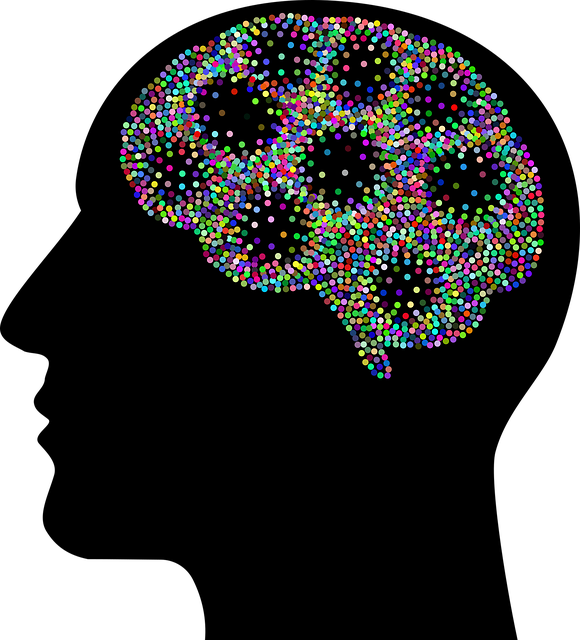Parker Blended Families Therapy: Enhancing Social Skills for Mental Health
Social skills, crucial for mental well-being, significantly impact individuals with anxiety, depress…….
In the ever-evolving landscape of mental health, understanding and addressing family dynamics has become increasingly complex. This is where “Parker Blended Families Therapy” steps into the spotlight as a specialized approach aimed at fostering healthier relationships within blended families. Blended families, characterized by the union of parents with children from previous relationships, present unique challenges that require tailored therapeutic strategies. This article delves deep into the world of Parker Blended Families Therapy, exploring its essence, global impact, economic implications, technological integrations, regulatory frameworks, and future prospects. By examining these aspects, we aim to provide a comprehensive understanding of this critical field and its potential to transform lives.
Parker Blended Families Therapy (PBFT) is a therapeutic approach designed specifically to address the complexities within blended families. It recognizes that step-parents, biological parents, and children from different backgrounds may struggle with adjusting to each other, leading to potential conflicts and emotional challenges. PBFT focuses on creating a supportive environment where all family members can express their feelings, work through issues, and develop healthier dynamics.
The core components of PBFT include:
Historically, PBFT emerged in response to the growing number of blended families resulting from divorce, remarriage, or single-parent households. Early therapeutic models often treated each family member separately, but researchers soon realized the importance of addressing interrelated dynamics within blended families. Over time, PBFT has evolved into a structured and evidence-based practice, backed by numerous studies demonstrating its effectiveness in improving family functioning and well-being.
The influence of Parker Blended Families Therapy extends far beyond its birthplace, with adoption rates and recognition varying across regions. Here’s an overview of its global impact:
| Region | Adoption Rate | Key Factors Influencing Trend |
|---|---|---|
| North America | High | Strong advocacy from mental health organizations, increased acceptance of blended families, and extensive research support. |
| Europe | Moderate to High | Diverse cultural perspectives, varying legal frameworks, but growing awareness of PBFT’s benefits. |
| Asia Pacific | Rising | Increasing urbanization and changing family structures, coupled with growing mental health awareness. |
| Middle East & Africa | Lower Adoption | Cultural norms and religious beliefs often influence family dynamics, but growing urban centers show potential for PBFT integration. |
Several global trends shape the trajectory of PBFT:
The economic landscape of Parker Blended Families Therapy is multifaceted, involving various stakeholders and market dynamics:
Technology plays a pivotal role in shaping the future of Parker Blended Families Therapy, enhancing accessibility and expanding service delivery:
The regulatory landscape surrounding Parker Blended Families Therapy varies across jurisdictions but is crucial in ensuring quality care and ethical practices:
Despite its benefits, Parker Blended Families Therapy faces several challenges and criticisms that require strategic solutions:
The following case studies illustrate the practical application of Parker Blended Families Therapy and the positive outcomes it can achieve:
Case Study 1: The Smith Family
A married couple, Sarah and David, welcomed step-siblings into their home through adoption. With three children from previous relationships, the family struggled with adjusting to each other’s routines and communication. PBFT sessions helped establish family rituals, improve conflict resolution skills, and foster a sense of belonging for all members. As a result, the Smith family experienced enhanced parenting practices, improved emotional connections, and a more harmonious household.
Case Study 2: The Johnson Blended Family
John and Emily, both with children from previous marriages, married and faced challenges in blending their families. PBFT coaching sessions between the biological parents helped them develop consistent discipline strategies and open lines of communication. Individual therapy sessions for each family member allowed them to express concerns, work through past traumas, and build resilience. The Johnson blended family reported improved relationships, better parenting skills, and a stronger sense of unity.
Case Study 3: Cultural Sensitivity in Action
In a diverse urban setting, a therapist specializing in PBFT worked with a multicultural family facing cultural clashes. Through culturally sensitive practices, the therapist helped the family navigate differences in parenting styles, values, and communication patterns. The sessions promoted cross-cultural understanding, improved family cohesion, and enhanced the parents’ ability to support their children’s emotional needs.
As Parker Blended Families Therapy continues to evolve, several potential growth areas and emerging trends warrant attention:
Parker Blended Families Therapy represents a powerful tool in navigating the complexities of modern family structures. By providing specialized support, it helps blended families build stronger relationships, improve communication, and foster a sense of belonging. The global impact of PBFT, coupled with technological advancements and evolving policies, positions it as a critical component of mental health services.
As we look to the future, addressing challenges through strategic solutions, continuing education, and innovative practices will ensure that Parker Blended Families Therapy remains effective and accessible. By embracing these developments, therapists can continue to make a profound difference in the lives of blended families worldwide.
Q: What is the primary goal of PBFT?
A: The primary goal is to help blended families navigate challenges related to step-parents, biological parents, and children from different backgrounds, fostering healthier relationships and improved family dynamics.
Q: How does PBFT address cultural differences within families?
A: Therapists use culturally sensitive practices to understand and respect diverse cultural backgrounds, traditions, and parenting styles, ensuring that therapy is tailored to each family’s unique context.
Q: Can online therapy be as effective as in-person sessions for blended families?
A: Online therapy can be highly effective, especially when combined with in-person sessions. It offers flexibility, accessibility, and innovative tools, making it a valuable option for many blended families.
Q: What role do step-parents play in PBFT?
A: Step-parents are an integral part of PBFT, participating in training programs, workshops, and individual therapy to improve their parenting skills, understand children’s behaviors, and build positive relationships with all family members.
Q: How can I find a qualified therapist for my blended family?
A: Start by asking your healthcare provider or local mental health clinic for recommendations. You can also search for licensed therapists specializing in PBFT through online directories or professional associations’ websites.

Social skills, crucial for mental well-being, significantly impact individuals with anxiety, depress…….

“Community outreach programs have become a cornerstone of modern mental health services, as evidence…….